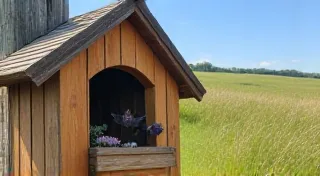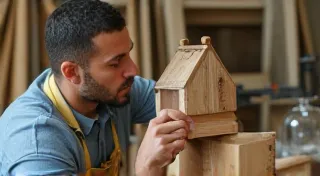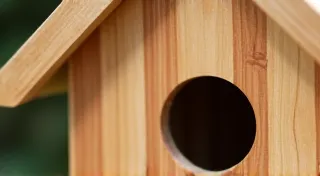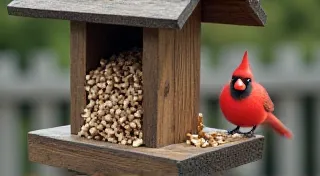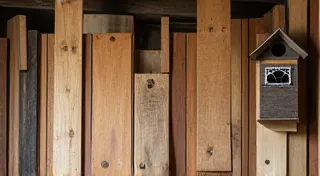Attracting Birds to Your Bird House: Placement and Care
You've built a beautiful, specialized bird house – now, how do you ensure it actually attracts feathered residents and provides them with a safe and thriving habitat? Simply building and placing a bird house isn’t always enough. Location, maintenance, and understanding bird preferences are key. This article will guide you through the essentials of bird house placement and ongoing care to maximize your chances of attracting a vibrant bird community.
Finding the Ideal Location: Bird House Placement
The perfect spot for your bird house isn't arbitrary. Different bird species have distinct habitat requirements. Consider these factors:
- Species Specifics: Research the specific bird species you're hoping to attract. Some birds prefer open areas, while others thrive in denser woodlands. For example, bluebirds typically prefer open fields with scattered trees, while wrens might favor a sheltered spot near shrubs. The type of wood you use for construction also plays a significant role in the birdhouse's appeal and longevity; understanding bird house materials and choosing the best wood is a crucial first step.
- Predator Protection: Birds are vulnerable to predators like cats, raccoons, and snakes. Mount your bird house on a pole with a baffle to prevent predators from climbing. Placing it away from overhanging branches also helps. A well-designed predator guard is essential for keeping your feathered friends safe. You can find valuable information on building a bird house with a predator guard to ensure your birdhouse remains a haven.
- Sun and Wind Exposure: Avoid placing your bird house in direct, all-day sunlight, especially in hotter climates. Also, consider prevailing winds; a sheltered location will provide a more comfortable environment for nesting birds.
- Height Above Ground: Different species prefer different heights. Chickadees and wrens often like lower bird houses (5-10 feet), while bluebirds might prefer something slightly higher (8-15 feet).
- Visibility & Proximity to Food & Water: Birds need to feel safe. A location with some visibility allows them to spot potential threats. Proximity to natural food sources (berry bushes, seed-bearing plants) and a reliable water source (bird bath, pond) will significantly increase your chances of attracting birds.
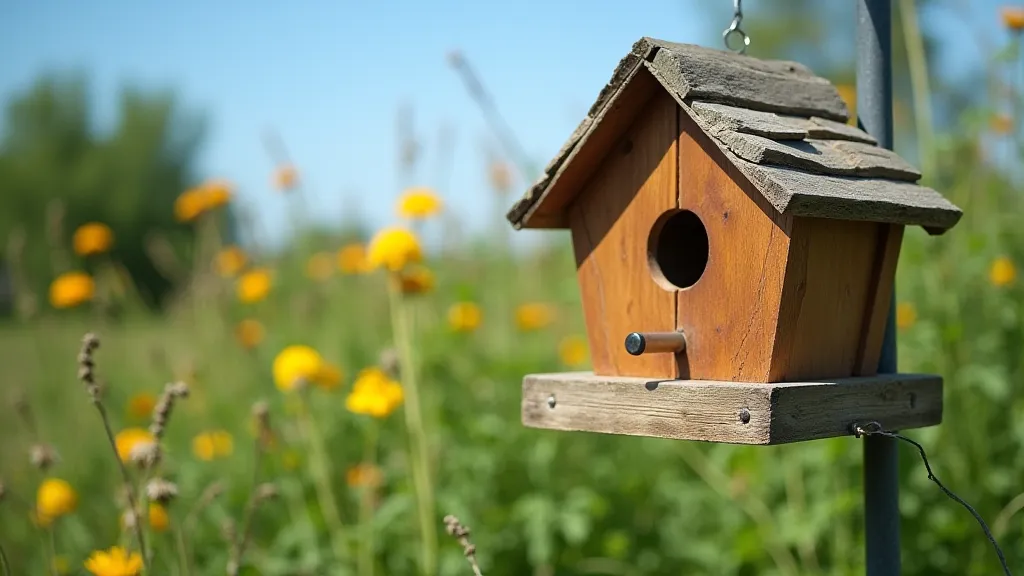
Ongoing Care: Maintaining a Bird-Friendly Habitat
Once your bird house is installed, consistent care is essential. Here's what you need to know:
- Cleaning: This is absolutely critical. Clean out old nests *after* the nesting season is over (typically late summer or early fall). This removes parasites and provides a fresh, clean space for the following year. Use hot water and a scrub brush; avoid using harsh chemicals. The natural appearance of a birdhouse is often more appealing to birds; consider using bird house finishing techniques that are safe and aesthetically pleasing.
- Parasite Control: While cleaning helps, occasional parasite infestations can still occur. Consider using a bird-safe insecticide specifically designed for bird houses, following the manufacturer’s instructions carefully.
- Repair and Maintenance: Inspect your bird house annually for any damage (cracks, loose parts, leaks). Repair these promptly to ensure the bird house remains structurally sound and weather-resistant. Proper maintenance contributes significantly to the longevity of your birdhouse.
- Predator Deterrents: Regularly check and maintain predator baffles. If you notice signs of predator activity, consider reinforcing your defenses.
- Natural Surroundings: Encourage natural growth around your bird house. Native plants provide food, shelter, and nesting materials. Avoid excessive pruning and the use of pesticides.
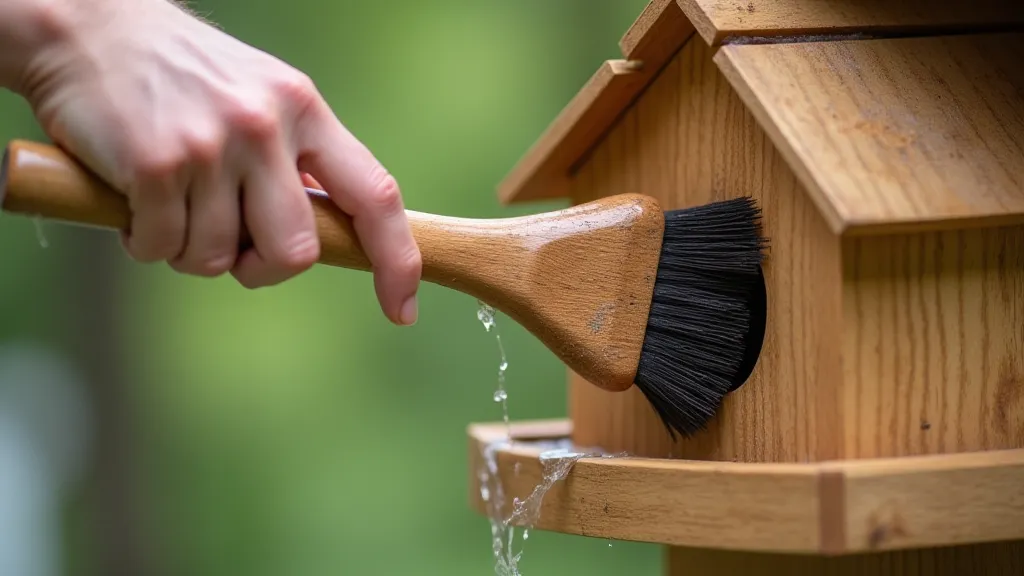
Beyond the Bird House: Creating a Bird-Friendly Landscape
Attracting birds isn’t solely about the bird house. A comprehensive approach involves creating a bird-friendly landscape:
- Bird Feeders: Supplement natural food sources with bird feeders. Offer a variety of seeds and nuts to cater to different species. Consider the materials used in your birdhouse; certain woods hold up better against the elements and offer a more appealing natural aesthetic.
- Water Sources: Provide a clean and reliable water source for drinking and bathing. A bird bath is a simple, elegant solution.
- Native Plants: Incorporate native plants that provide food, shelter, and nesting materials. Consider plants that provide nesting material as well.
- Reduce Lawn Area: Lawns offer little benefit to birds. Replace some of your lawn with native plants and ground cover. Reducing your lawn area significantly increases the amount of habitat available to birds.
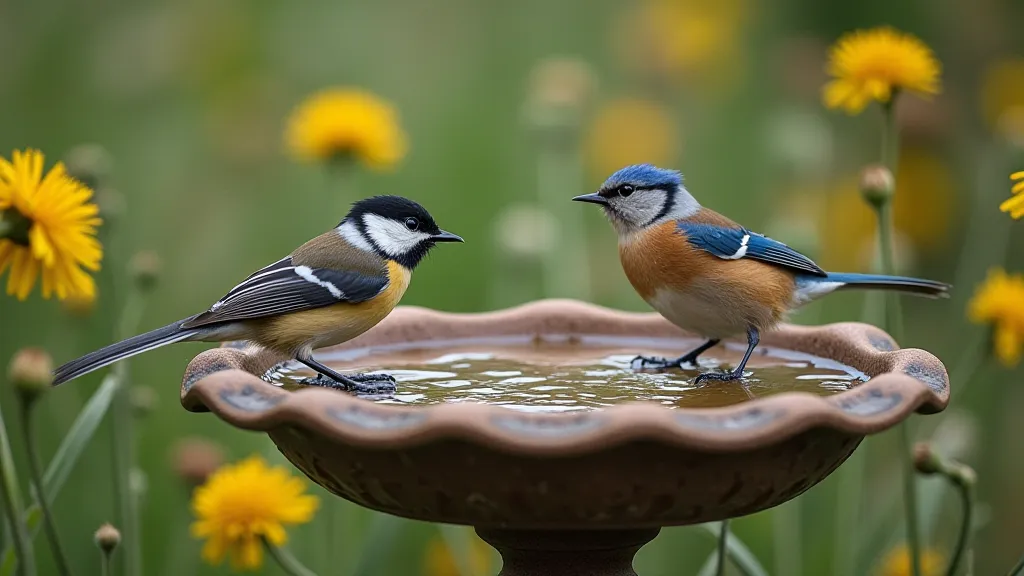
Creating a suitable habitat involves more than just the physical structure; it requires a commitment to providing a safe and inviting environment. Different bird species have different preferences and requirements. For example, if you're hoping to attract Chickadees, designing a specific Chickadee bird house tailored to their needs and preferences is key. The height and positioning of the birdhouse are just as important as the materials it’s made from. Consider the local climate and predators when selecting a location. Even seemingly minor details, such as the size of the entrance hole, can impact the success of your bird house. If you’re struggling to keep your birdhouse protected from the elements, exploring different DIY bird house roof designs can provide excellent solutions for waterproofing and extending its lifespan.
Many bird enthusiasts find themselves initially focused on the main house structure. However, extending the welcoming environment to include a robin nesting platform can be a rewarding experience, offering a simple yet effective way to attract even more avian visitors. These platforms offer an open-air option for robins and other birds who prefer not to nest in enclosed structures, adding another dimension of diversity to your bird-friendly habitat.
Furthermore, understanding the nuances of construction can enhance the appeal of your bird house. Crafting a sturdy and aesthetically pleasing structure often involves attention to detail and proper woodworking techniques. Learning essential woodworking tips for building bird houses, including accuracy and safety precautions, can elevate the quality and longevity of your creation.
The process of attracting birds is a rewarding one, allowing you to connect with nature and appreciate the beauty and diversity of avian life. Observing the birds that visit your yard can provide endless hours of enjoyment. Understanding the intricacies of bird behavior and habitat preferences is key to success.
Remember that creating a bird-friendly landscape is an ongoing commitment. Regular maintenance and adjustments are necessary to ensure the continued health and well-being of your feathered friends.
Furthermore, consider the long-term sustainability of your bird-friendly practices. Using eco-friendly materials for your birdhouse construction and avoiding harmful pesticides are essential for protecting the health of your birds and the environment. Educating yourself and others about the importance of bird conservation is another valuable contribution you can make.
By following these guidelines, you can transform your yard into a thriving bird habitat, providing a safe and welcoming home for a diverse range of bird species. Enjoy the beauty and song that these feathered friends bring to your outdoor space!
Creating a truly bird-friendly garden isn’t just about attracting individual species; it's about fostering a complete ecosystem. This involves providing a variety of resources, from food and water to nesting sites and shelter. It’s a holistic approach that benefits not only the birds but also other wildlife, creating a more vibrant and biodiverse environment.
The more people who prioritize bird-friendly practices, the better the chances of ensuring the survival of these incredible creatures for generations to come. Let's work together to create a world where birds can thrive, enriching our lives with their beauty and song.
